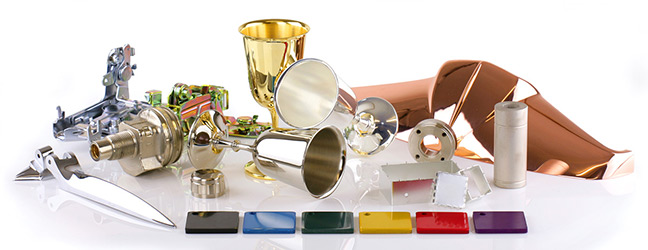What Is Metal Blackening And How Does It Work?
Metal blackening, also known as chemical blackening or steel blackening, is one of several surface treatments we offer here at Dorsetware. Unlike electroplating or aluminium anodising, however, this process involves the application of black oxides. This has several advantages over other types of anodising materials and so it’s no surprise that metal blackening is becoming increasingly popular. Our team of experts are on hand to explain the process further.
Understanding Chemical Blacking
Metal blacking refers to the process of chemically altering the surface of metal objects to create a black oxide layer. As well as improving general durability and corrosion resistance, this can also minimise left reflection, making the process especially useful in certain industries.
There are two ways in which metal blacking process can be performed: cold chemical blackening and hot chemical blackening. As their names would suggest, the first is performed at room temperature while the second is performed at high temperatures, with each yielding slightly different results in terms of durability and appearance.
The Chemical Blackening Process Explained
The process of metal blackening itself involves several steps:
- Surface preparation – The metal surface is thoroughly cleaned to remove any dirt, grease, or rust. This step is crucial to ensure good adhesion and an even coating.
- Immersion in blackening solution – The metal object is then immersed in a blackening solution formed of various chemicals such as sodium hydroxide, nitrates, and selenium compounds. The exact composition of the solution may vary depending on the desired finish and the type of metal being treated.
- Formation of black oxide coating – Once it’s been immersed, the metal will react with the chemicals in the blackening solution, resulting in the formation of a black oxide layer on the surface.
- Rinsing, drying, and oiling – After the desired metal blacking layer has been formed, the object is thoroughly rinsed to remove any residual chemicals. It is then dried and sealed with a light oil to complete the process.
Applications Of Metal Blacking
Many industries make use of chemical and steel blackening, including automotive industries, hardware manufacturers, and decorative arts. Some common uses of metal blackening include:
- Aesthetics – Metal blacking can improve the look of an object by providing a sleek, black finish, either in matte or gloss depending on the exact chemical blacking process These qualities are often used in architectural elements and jewellery.
- Corrosion resistance – The black oxide layer formed through chemical blacking acts as a protective shield, reducing the susceptibility of metal objects to corrosion. This makes blackened metals suitable for outdoor applications or environments prone to moisture and humidity.
- Reduced light reflection – Blackened metal surfaces, especially those with a matte finish, exhibit low light reflectivity. This makes them ideal for optical and photographic equipment, where minimising unwanted reflections is essential.
Metal Blackening Services From Dorsetware
At Dorsetware, we provide specialist services in all metal and chemical blackening processes. We use the finest state-of-the-art technology and are proficient in delivering consistent, high-quality results.
To learn more about our chemical blacking expertise, why not get in touch? You can reach us using our online contact form or give us a call on 01202 677939. You can also browse our website to see the full range of services we offer.

